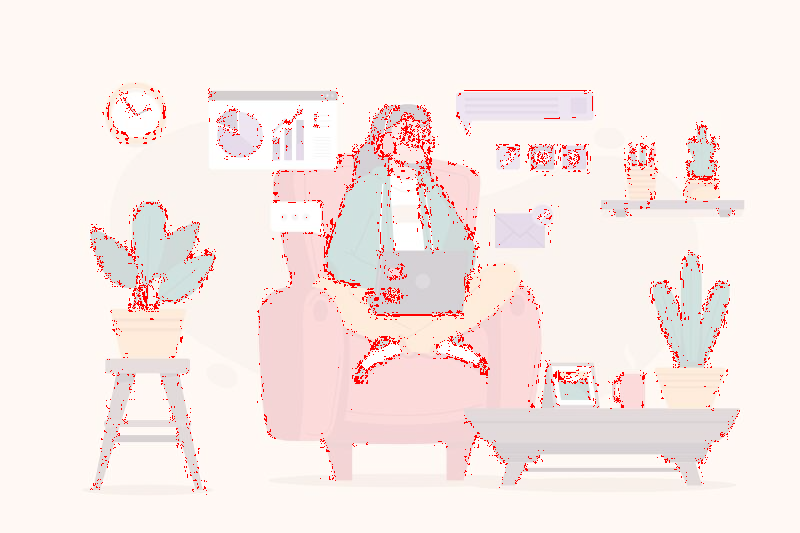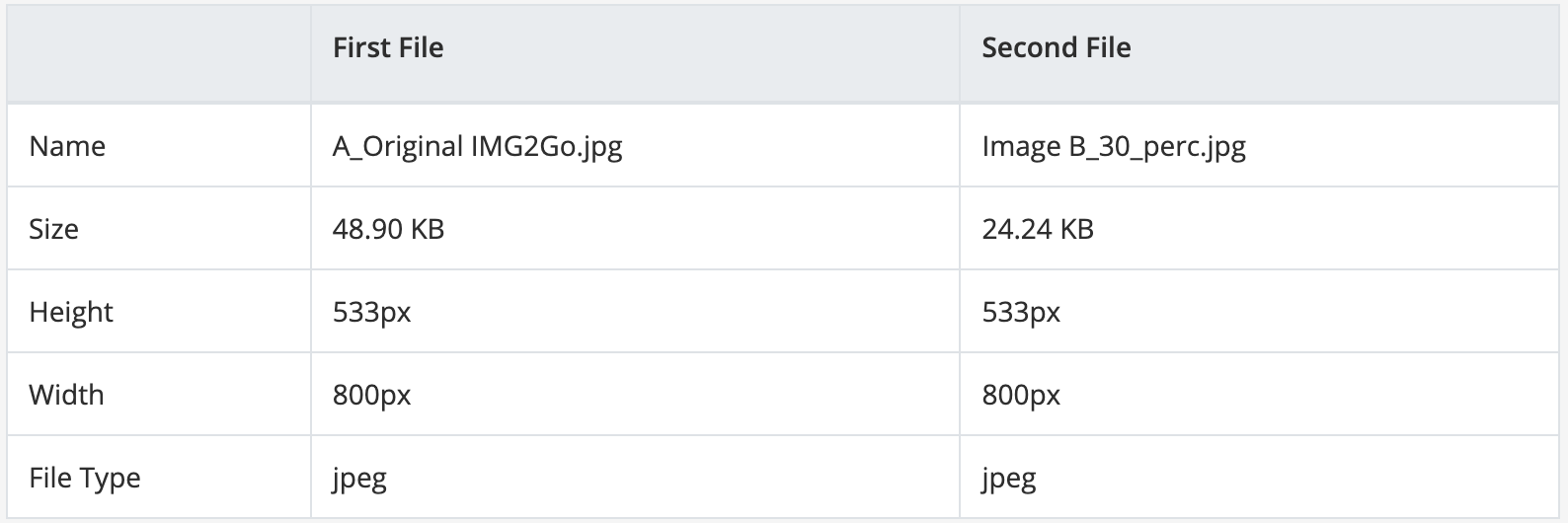Small differences in images can be hard to see. With our web-based tool, finding these differences is simple. It uses an image-processing library that provides extensive functionality for image comparison.
This makes it easy to spot differences between two images. Compare the original file and the converted one to check the conversion quality.

To show how the Compare Images tool works, we have prepared two example images: the original image and a modified version where some objects are missing or have different colors. Can you spot the differences between them?
Our image comparison tool quickly analyzes the images and highlights the differences in bright red. You can also change the highlight color to match your preferences.
After the comparison, a diff image is generated that shows exactly where the two uploaded images differ. This is especially useful for checking image quality, as the tool can detect even small changes in resolution, color, or compression.

For best results, prepare the images so they have the same size and resolution. The tool supports many file types (bmp, gif, ico, jpeg, png, tga, tiff, etc.), so you can compare images in the format that suits you.
With the Compare Images tool, you can quickly see how much detail is lost in the compressed version of your image and spot any compression artifacts.
In the example below, we compare an original JPG with a compressed version created with a quality setting of 30%. The threshold is set to 10 (1-100).


The compression artifacts mainly affect the object boundaries in the image.
The data below the generated diff image shows the comparison method (here, Mean Absolute Error), the absolute error count for each color channel (Blue, Green, and Red), and the total error count for all channels (All). It also shows the percentage of pixels that differ between the two images.

The error count shows how many pixels differ between the original JPG image and the compressed JPG image. A higher error count means more pixels have changed between the two images, which usually means lower compression quality, and vice versa.
The absolute error count for all channels is 8,809, which corresponds to a 2.07% difference compared to the total pixel count of 426,400 (Total Pixels = Height x Width). This shows that the compression had a relatively small impact on overall image quality.

From this table, you can see that the compressed image is 24.24 KB and the original image is 48.90 KB. Both images have the same dimensions (533px x 800px).